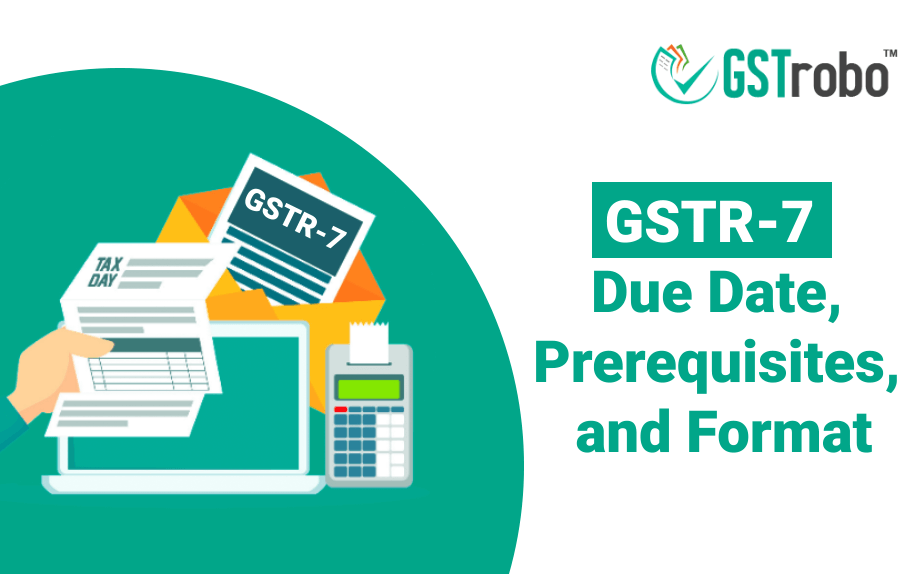GSTR-7 – Due Date, Prerequisites, and Format
Every taxable person registered as a TDS deductor under GST needs to file GSTR-7. In this blog, we will know GSTR-7 – Due Date, Prerequisites, and Format.
| Latest Update 28th May 2021 1. The GSTR-7 due date for April and May 2021 is extended till 30th June 2021. 2. Reduction in the late fee from INR 200 per day to INR 50 per day. 3. INR 2,000 Capping on the late fee for GSTR-7. |

What is GSTR 7?
GSTR-7 is a type of GST return that needs to be documented by all those taxpayers who are registered as TDS deductors under GST. GSTR-7 contains all the data related to the supplier and all those transactions where tax is deducted at the source.
GSTR-7 Form Due Date
The due date for filing GSTR-7 is on or before the 10th of the subsequent month.
Let us understand this with an example:
If you are filing GSTR-7 for Dec 2021 then you need to file it on or before the 10th of January 2022.
Prerequisites for Filing GSTR-7 Form
Here are prerequisites for filing GSTR-7:
- You must be registered as a TDS deductor under GST and must have a valid GSTIN.
- The aggregate turnover of your business during the previous financial year must exceed INR 20 lakh.
- Keeping the record of all those transactions where you deducted the tax to pay for it for vendors and providing an input tax credit of the same.
GSTR-7 Format

Sections in GSTR-7 Form
In GSTR-7, the person who has registered as a TDS deductor needs to furnish all the information about his business and transactions. So, here is a detailed view of all the columns in GSTR-7:
- GSTIN: This column gets auto-populated with a unique identification number (GSTIN) provided by GST authorities.
- Legal Name of the registered taxpayer: This column will also get auto-populated based on the GSTIN.
- Trade Name: In this column, the taxpayer needs to mention the trade name. It shall be noted that legal name and trade name can be different
- Return Period: In this column, the TDS deductor needs to mention the return period for which you are filing the GSTR-7.
- Details of Tax Deducted at Source: The TDS deductor needs to record all the transactions that involve tax deduction at sources along with the total amount paid to deducted and based on the above information, IGST, CGST and SGST will be calculated.
- Amendment in Details of Earlier Filed GSTR-7: Through this column, a taxpayer can easily modify or amend the earlier-filed GSTR-7.
- Tax deduction at Source and Tax Paid: In this section, the TDS deductor needs to furnish the tax payment details that he or she has deducted and paid for the selected tax period.
- Interest and Late Fees, Payable and Paid: This section will also consist of details regarding interest and late fees payable or paid.
- Refund Claimed: This section of GSTR-7 contains details regarding the refund claimed by the TDS deductor from the e-cash ledger.
At the end of GSTR-7, the TDS deductor needs to verify it using a digital signature certificate (DSC). But, before verifying the GSTR-7, he or she should validate the details entered as GST return form once filed cannot be amended or rectified.
